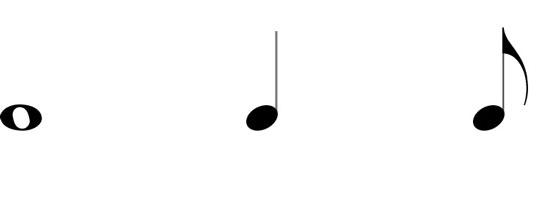You couldn't read or write music without notes. If you think of music as a language, the notes are like letters of the alphabet. If you know how to recognize the notes, you can learn the language.
Notes are made up of up to three specific components: note head, stem, and flag. Every note has a head — it’s the round part of a note. A note stem is the vertical line attached to the note head. A note flag is the little line that comes off the top or bottom of the note stem.

By the way, stems can point either up or down, depending where on the staff they appear (pointing up or down makes no difference in the value of the note). Only eighth notes and smaller notes have flags. Quarter notes and half notes have stems but no flags. Whole notes have neither stems nor flags.
Instead of each note getting a flag, though, notes with flags can also be connected to each other with a beam (sometimes called a ligature), which is really just another, more organized-looking incarnation of the flag. For example, two eighth notes can be written as each having a flag, or as connected by a beam.

Four sixteenth notes can have flags, can be grouped into two pairs connected by a double beam, or can all be connected by one double beam. It doesn’t matter which way they are written, they would sound the same when played.

Likewise, eight thirty-second notes could be written in a number of ways. Note that thirty-second notes get three flags (or three beams).

Using beams instead of individual flags on notes is simply a case of trying to clean up an otherwise messy-looking piece of musical notation.





